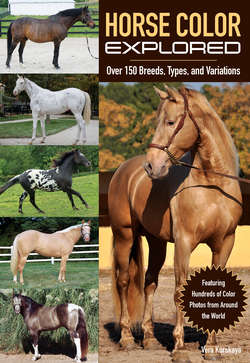Читать книгу Horse Economics - Vera Kurskaya - Страница 21
На сайте Литреса книга снята с продажи.
SEAL BROWN
ОглавлениеSeal brown color (Photo 9) is described as black or dark color of the body and guard hair with a brown or tan area around the muzzle, eyes, groin, near the elbows, on the underbelly (especially in the girth region), and sometimes on the upper inside of the hind legs. These markings can be present in different horses at different intensities and in different combinations, and most frequently it is possible to observe on the horse’s muzzle and near the eyes. In fact, people frequently confuse seal brown with dark bay (see p. 12), and even experienced horse breeders can make errors. In addition among some horsemen circulates a myth that seal brown color does not exist, and such horses are simply very dark bay or strongly faded black horses.
In order to accurately determine seal brown color, it is necessary to remember the following characteristics:
Brown areas usually have rounded or oval outlines, clearly separated against the black or dark background. In dark bays, on the other hand, there is a smooth transition between the red, brown, dark brown, and then black color. It is especially easy to examine this on the muzzle above the nostrils.
Brown areas have a relatively bright, reddish color, but are seldom light red.
Unfortunately, color determination in this case is complicated by the fact that the seal brown color also can have shades, as observed in bays. The characteristics described above are accurate only for the darkest and most typical versions of seal brown. In addition, the skin and hooves are pigmented, the eyes dark hazel, the eyelashes black or dark brown. Foals are usually born looking similar to bay foals, but with noticeably darker legs. The horse develops the color’s characteristic phenotype only after baby hair is shed. Seal brown color is common in German Sport Horse breeds, Thoroughbreds, Standardbreds, and Russian Trotters.
